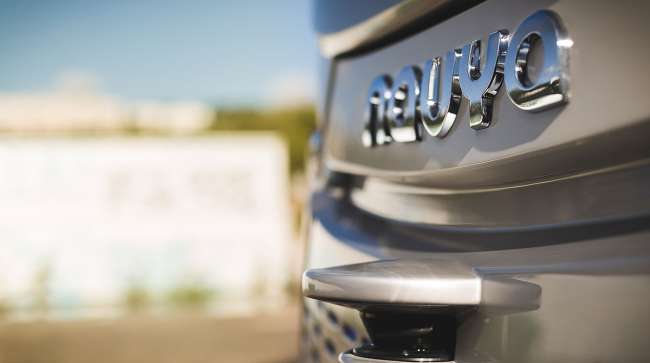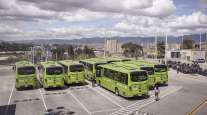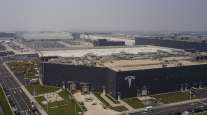Self-Driving Electric Shuttle Buses Will Be Introduced at University of Michigan

A pair of self-driving shuttle buses should begin motoring around Ann Arbor, Mich., later in April in an ambitious test of the new technology.
The electrically powered, 15-seat shuttles will be part of the University of Michigan’s bus service, carrying passengers on a short course in the North Campus. Anybody with a university bus pass can use one of the shuttles, which will have safety drivers.
“Our goal is to reduce congestion in urban areas,” Pierre Bourgin, vehicle developer Navya’s general manager for sales, said as one of the shuttles navigated a short course inside Cobo Center during the Society of Automotive Engineers conference in Detroit. The university’s Mcity autonomous vehicle research program will operate the shuttles it bought from Navya.
Virtually silent except for the squeak of rubber tires on Cobo’s floor, the demonstration vehicle weaved among cones and other obstacles and came to an autonomous stop when Bourgin stepped in front of it to demonstrate pedestrian safety.
‘We’re confident the Mcity driverless shuttle will offer a safe transportation option,” Mcity Deputy Director Carrie Morton said. “We have nearly 18 months’ experience operating Navya’s shuttle inside our test facility.”
Navya, a 3-year-old company based in Lyon, France, already has shuttles running in a number of places around the world, including carrying people from the parking lot to airport terminal at Charles de Gaulle airport in Paris and a 0.6-mile route in downtown Las Vegas. A delivery truck hit the Vegas shuttle on its first day in operation last fall. The shuttle stopped, but the truck didn’t. Its driver got a ticket.
Navya hopes to have six-passenger self-driving taxis in service in Paris later this year.
Ann Arbor’s two 15-passenger shuttles will cover about a three-quarter-mile route. The safety driver will answer passengers’ questions and take over if needed.
The shuttles will run year round, but heavy rain or snow can disable the lidar sensors they use to navigate and avoid obstacles. If that happens, the shuttle will stop and alert the driver to take control with a joystick.
“I love seeing people’s eyes grow wider as they realize this isn’t a concept vehicle. It’s real,” Navya Sales Operations Manager Aaron Foster said.
Navya’s North American headquarters is in Saline, southwest of Ann Arbor. The company has about a dozen employees there, including an assembly building on U.S. 12 that should complete the first U.S.-made shuttle soon.
“We’re a French-based startup company, but we see big potential here,” Foster said. “We’re looking for a permanent home in North America.”
Distributed by Tribune Content Agency, LLC




